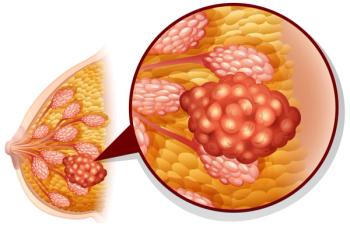
Cell-Free DNA Assay Achieves High Negative Predicative Value in Lung Cancer
An 80% sensitivity for lung cancer was observed with the liquid biopsy, with high sensitivity observed for early-stage disease, as well.
CancerNetwork spoke with Ali H. Zaidi, MD, medical director of Esophageal and Lung Research at the Allegheny Health Network Cancer Institute, about efficacy findings related to associated with the FirstLook cell-free DNA (cfDNA) test.
Zaidi began by introducing the DELFI-L101 study (NCT04825834), which was an observational study assessing the training and validation of the cfDNA classifier. The study revealed an 80% sensitivity with the test, with sensitivity observed with early-stage, stage I or II, cancers. Zaidi touched upon a 58% specificity before highlighting a 99.8% negative predictor value, which implies that a negative test will be confirmed with a negative low-dose CT 99.8% of the time.
Zaidi expressed that the liquid biopsy was a good “rule out test,” underscoring that its use with low-dose CT vs low-dose CT alone reduced the need to screen by almost 50%. He iterated that screening the same number of patients would, in essence, elicit double the number of cancers.
Zaidi then explained that a positive test with the liquid biopsy was associated with a 5.5 times greater risk of lung cancer diagnosed with low-dose CT. He stated that the assay performed well across all patient demographics and comorbidities.
Transcript:
If you look at FirstLook, which is a cfDNA test, it is the first clinically validated high sensitivity test developed based on the results of DELFI-L101 study [NCT04825834], which was published by DELFI diagnostics recently. L101 was a prospective case controlled observational study conducted at multiple institutions, looking at training and validating the cfDNA classifier. Based on the findings, the study identified a high sensitivity [rate]––80%––even across what you would call early-stage disease, which would be stage I and II. On top of that, the specificity [rate] was about 58%, but the more important finding was the negative predictive value, meaning that if you have a negative test, if you get a low-dose CT later on, [that] will most likely be negative, 99.8% [of the time].
Which makes it a great rule out test. Then when you look at using FirstLook in conjunction with low dose CT compared to low dose CT alone, the number [of patients] needed to screen were dramatically reduced by almost 50%. Which means that if you screen the same number of patients, you are likely to find twice the number of cancers when you are integrating FirstLook in the first [?] decision making. That was a great finding.
Then what we additionally found out was that patients who had a positive blood test compared to a negative blood test, had 5 and a half times higher risk of lung cancer diagnosed on a low dose CT, which was done as a part of that workflow. Overall, the [assay] performed wonderfully, both across all demographics as well as comorbidities.
Reference
DNA evaluation of fragments for early interception - lung cancer training study (DELFI-L101 Study) (DELFI-L101). ClincalTrials.gov. Updated June 6, 2024. Accessed November 13, 2024.
Newsletter
Stay up to date on recent advances in the multidisciplinary approach to cancer.




